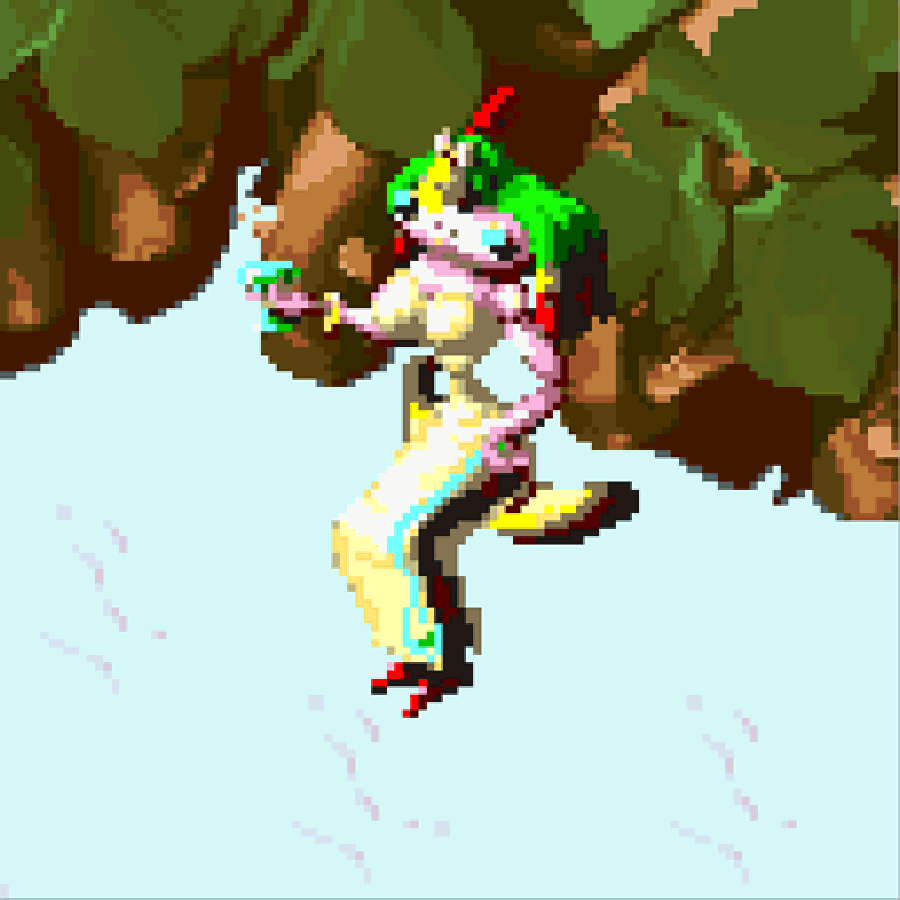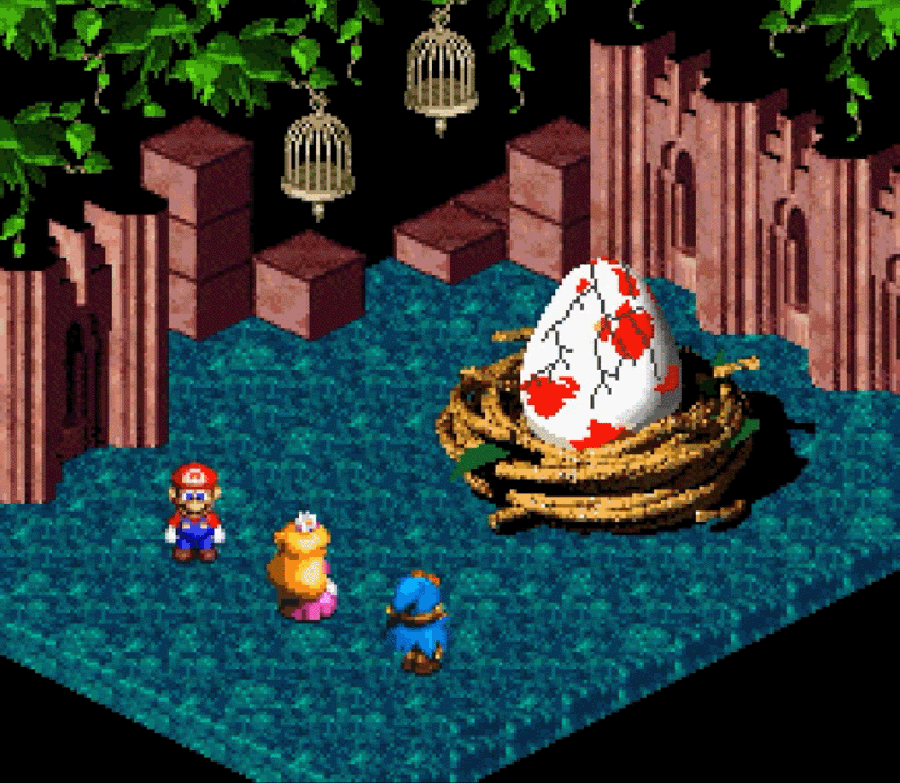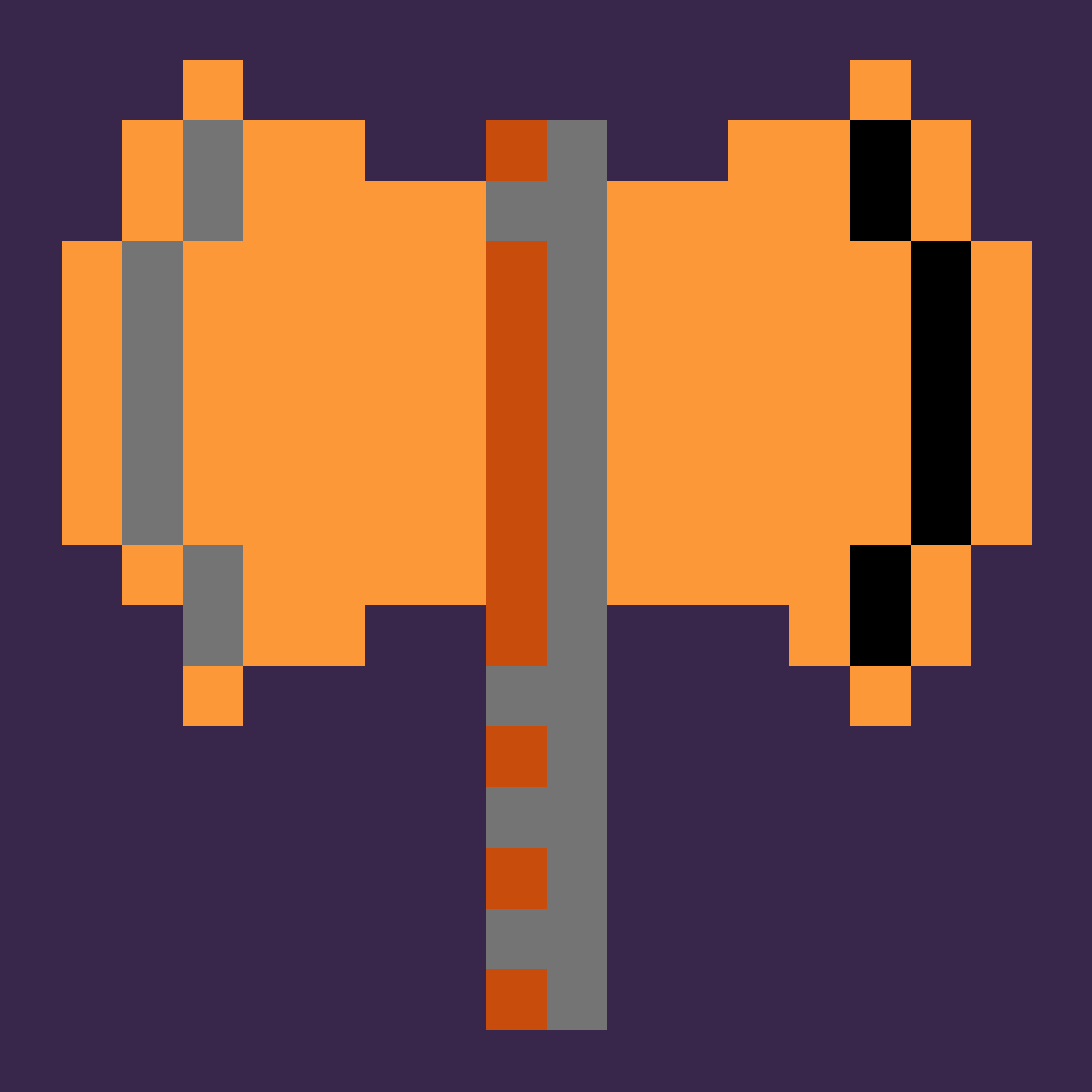The Story Behind Super Mario RPG’s Valentina
This is not a Mario blog, even if this is the third Mario-related post in a row. There’s actually a much bigger one coming in the not-too-distant future, but I’m only offering up so much of this one franchise because I happen to know a lot about the Mario games — and by virtue of being long-lived and consistently popular, there’s a lot to write about. Recently, I became a patron of Supper Mario Broth, the multi-platform effort to explore Mario’s niche history, and it turns out the first paywalled post I read upon subscribing had some surprising history behind Super Mario RPG and its sole female villain.
Back in 1996, I was a huge fan of both Nintendo and Squaresoft, so I was very excited at the prospect of these two video game companies teaming up to make Super Mario RPG: Legend of the Seven Stars. But also being the kind of weird little boy who always had an eye out for female characters in any franchise, because they were a lot rarer back in the 8-bit and 16-bit days, I was especially stoked to see previews of the game showing off a new female baddie. Valentina, as she’d come to be called in the western localizations of the game, was the main villain of one chapter of the story. In a lot of ways, she works like a response to Princess Peach, which makes sense because in 1996 Peach was still essentially the series’ only female character of note.
Whereas Peach is a beloved monarch of the kingdom she rules over, Valentina is an imposter, having schemed her way to power in a fluffy cloud kingdom, Nimbus Land, by imprisoning the real king and queen and lying to their subjects. She also looks nothing like Peach, which is actually kind of notable, because a lot of female characters in the Mario games look like they’re probably related to Peach.
Her battle mode sprite shows off an exaggerated figure; she has a teeny-tiny wasp waist but wide hips and a big bust — so big, in fact, that her breast jiggle when she’s struck in a way that seems rather unusual for Nintendo in general, much less a Mario game. Valentina is also carrying with her what clearly seems to be a cocktail, which I would think pushes her even more into PG-13 territory — and that’s odd, when these games tend to be the softest of PGs if not G-rated outright, but again, they’re trying to visually signify that Valentina is not Peach, and these seem like handy ways to accomplish that.
For reasons that are not fully explained, Valentina has a parrot on her head that may or may not be dead. I have never figured out whether this might be referenced to something out in pop culture, but I’m pretty sure it’s not meant to imply that she’s a Jimmy Buffett fan. (EDIT: Actually, I’m now pretty sure it is a reference to Jimmy Buffett and his music, because his fans are “parrot heads” and because Valentina’s original Japanese name seems like a pretty direct reference to his most famous song. More on that below.) Whatever the case, birds are Valentina’s visual motif. Her hired muscle is Dodo, a big black bird, and one of the midbosses you fight in Valentina’s portion of the story is Birdo, though I suppose Birdo only seems bird-like in English territories, since she’s not known by that name in Japan.
I’d like to think that Birdo’s origins as a midboss in a cloud area prompted her appearance in this part of Super Mario RPG, but it may have been as simple as “is feminine, has eggs.”
Valentina’s theme is a baroque-sounding harpsichord piece, which I suppose is appropriate for a part of the game concerned with courtly politics, but throughout it is a strange sound effect that is either supposed to be the sound of a bird or Valentina chuckling evilly — or both, which would be appropriate.
In the end, Mario and friends trounce her in battle and she flees, and it turns out she is not in any way connected to the game’s overarching story, which has the world being invaded by Smithy, an evil weapon-forging monster, and his league of minions, each of which represent a different weapon. This was not always the case, however, and at one point in the planning stages, Valentina was intended to be a subordinate of Bowyer, the archery-themed minion. On March 10, 2021, in celebration of the twenty-fifth anniversary of Super Mario RPG’s debut, character designer Kazuyuki Kurashima shared concept art showing a flowchart of sorts for how the game’s various enemy factions were related.
Via Kazuyuki Kurashima. And note there is an addition “general,” appearing to the upper left of the four recognizable ones and representing the kind of staff or rod weapon that magic users in RPGs usually wield. This character was completely cut from the final version of the game.
In addition to showing how much changed between the design stage and the final version of the game, this illustration also shows that whole plotlines were lifted and rearranged, to the point that Valentina remains in the final cut but disconnected from Bowyer, who is defeated far earlier. This graphic also associates each of Smithy’s four main “generals” — the ones known in the final version of the game as Mack, Bowyer, Yaridovich, and the Axem Rangers — with a form of abstract evil, more or less. Mack is given 恐怖 (kyoufu, “fear, dread, terror”), which makes sense because he literally becomes an occupying force in the Mushroom Kingdom. Bowyer is given 裏切り (uragiri, “betrayal, treachery”), which makes sense for Valentina even after she’s been moved to a different part of the story, as she is an imposter who lies to her subjects in order to maintain power. She’s betrayed the people of Nimbus Land, essentially. But it doesn’t make so much sense for Bowyer. It would actually be a better fit for Yardiovich, since tricks Mario by passing himself off as someone else initially. Instead, the graphic assigns Yaridovich 憎悪 (zouo, “hatred, abhorrence”). And then the Axem Rangers are given 破壊 (hakai, “destruction”), which doesn’t seem to fit with anything in particular with their role in the final version of the game.
That’s definitely Valentina, or at least a scribbly prototype of her, parrot headwear and all, although at no point in the game does she wield a bow and arrow.
Being someone who always likes to figure out why a given name was assigned to a given character, I am tempted to conclude that Valentina’s name results from some connection to Cupid, another figure who famously wields a bow and arrow. The fact that Valentina’s storyline also involves love and marriage — initially passing off Dodo as the true heir to Nimbus Land and also her fiance, plus the epilogue that has her falling in love with another of the game’s antagonists — there would seem to be a Valentine’s Day connection there, but if it’s intentional at all, it only happened after the fact. In the original Japanese version of the game, her name is マルガリータ or Margarita, which can be a female given name but which is also a cocktail.
I always read what she’s holding as a martini glass, but I suppose it could just as easily be a margarita glass — and if it was, it might explain Nintendo’s motivation to change the character’s name to something not associated with booze, which I guess makes sense but it seems strange not to edit the cocktail out of her hand as well. If she is supposed to be named after the drink, then it puts her in good company with the other Mario series female characters at the time who were also named after things that are either beautiful or sweet — Peach, Daisy, Syrup — and I suppose a valentine, in the generic sense, works along those lines as well. It’s pointed out on her Super Mario Wiki entry that her unusual design may actually be meant to evoke a cocktail glass, with her narrow waits representing the stem and her large bosom representing the way the bowl of the glass flares out, which I’d never considered before and which, now that it’s in my head, I can’t unsee.
And while I’d initially passed off the idea of this character being a reference to the singer Jimmy Buffett, whose fans are called “parrot heads” and whose most famous song is literally about drinking margaritas, I now think it’s more likely an intentional thing. If it’s not, it’s a wildly improbable coincidence. And while it might seem weird to imagine that this particular singer would inspire anything in a Mario game, it’s really no weirder than most of the Koopalings’ names being inspired by real-life musicians.
Anyway, what a wild character.
I always thought Valentina made for an interesting addition to the Mario canon, but alas, she and the rest of the crew introduced in Super Mario RPG have yet to resurface. Only Geno has made a handful of appearances in subsequent titles, and even then, they’ve been less than Super Mario RPG fans have been hoping for. Personally, I know that I belong to a certain generation of Nintendo/Squaresoft fans whose heads would explode if we saw these characters again. For the moment, I guess we can just think wonder about what was going through the designers’ heads when she was created.
Miscellaneous Notes
Though the name Margaret means “pearl,” the Spanish form Margarita means that but also “daisy.” In fact, the margarita cocktail most likely gets its name from being a variation on the brandy daisy, a cocktail that is very similar just with brandy swapped out for tequila. Because tequila is a Mexican liquor, the cocktail was given the Spanish translation for “daisy.”
There’s another seemingly scrapped storyline indicated by the illustration involving Bowser being somehow connected to the Axem Rangers, the Super Sentai parodies fought late in the game. As you might expect from their name, the Axem Rangers fight with axes and also ride an airship that is shaped like an axe. As it’s pointed out in the Supper Mario Broth post, Bowser never wields an axe in the actual game, but he does have a symbolic association with them in the form of the dungeon stages in the original Super Mario Bros., where Mario must tag the axe to make the bridge crumble and send Bowser into the lava. Those axes are actually a primo piece of the original game’s visual lexicon that later games have mostly ignored.
Like I said, Super Mario RPG came out at a time when female characters were rarer in general and rarer in the Mario games. By my count, there were only nine female characters in the canon in 1996: Pauline (and Lady, if you want to count her as a separate character), Peach, Birdo, Wendy O. Koopa, Daisy, Sabāsa (the witch boss from Super Mario Land 2), Syrup (the main antagonist from Wario Land), and Wanda (the block fairy from 1993’s Mario & Wario who never really got another moment in the spotlight). You also get Candy, Dixie and Wrinkly Kong if you want to count the Donkey Kong Country games that had come out by then. And there were other female characters introduced in Super Mario RPG, but Valentina was by far the most notable.
For the record, though, the English version of the Super Mario Bros. instruction manual identifies the generic Cheep Cheep enemy as a “she,” for reasons I’ve never understood.
I’ve always viewed Valentina’s odd, football-shaped head as being reminiscent of Betty Boop’s. They’re both supposed to be sexy despite having an odd-shaped head, and if you’ve ever wondered why Betty’s head shape seems somewhat out of proportion with her figure, it’s probably that in her earliest incarnation,1930’s Dizzy Dishes, she was not a human but an anthropomorphic dog — a poodle, according to some sources, though the design reminds me more of a bulldog.
As the character become increasingly popular, her design was revised to make her human, but she retained the oblong face shape. I personally have always viewed Valentina as having a similarly overside noggin.
An additional way in which Valentina works as an anti-Peach is that while fleeing from the scene of the crime, she gets dropped into Booster Tower, making her captive there in the way that Peach was earlier in the story. Just like he did to Peach, Booster proposes marriage to Valentina; however instead of wanting to get away, she actually falls in love with him, as a result of a whispered something that we, the player, never get to hear. It’s nice symmetry, at least.
I’ll probably never get around to giving Booster his own post, but at the time I first played the game, I viewed him as a riff on Wario. They look very similar, right down to the big red nose that many Wario-associated male characters seem to have. There’s even a line-up of portraits of the various Boosters in his family — this one is Booster VII, we learn — where one of them looks exactly like Wario, and a Snifit peering at the portraits one by one seems to recoil back in horror when passing by the Wario-looking one.
However, it’s pointed out on the Mario Wiki entry for Booster that he also looks a great deal like Cid from Final Fantasy IV — big teeth, messy beard and a horned helmet. It’s especially easy to see in the Yoshitaka Amano concept art for Cid. They’re even both associated machinery, with Booster having trains as a central motif.
Given that Super Mario RPG is a joint collaboration between Nintendo and Squaresoft, it would actually be appropriate for Booster to be a reference to characters from both company’s other games.
The cloudtop area where Valentina seizes power is known in the localized translation as Nimbus Land, but in the original Japanese release, it’s マシュマロの国 (Mashumaro no Kuni or “Marshmallow Kingdom”). I presume the name was altered because it’s supposed to be somewhat of a surprise that one of Mario’s party members in this game, Mallow, is actually the missing prince to this kingdom and calling the area something so close to his name just made it too obvious.
Finally, giving Valentina a cocktail to tote around with her might be a handy way to differentiate her from Peach, but there is a Mario game in which Peach gets canonically drunk. In Super Mario Kart, her victory animation has her chugging the bottle of champagne and and blushing. This was amended for the western release of the game. For the record, the original version also has Bowser drinking directly from the bottle.












